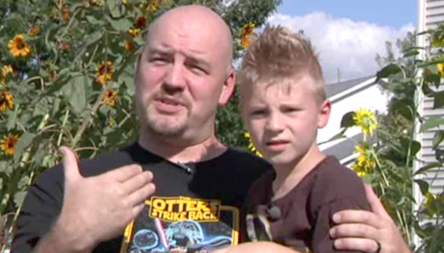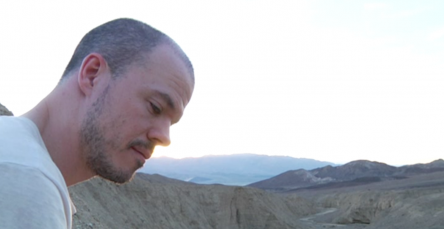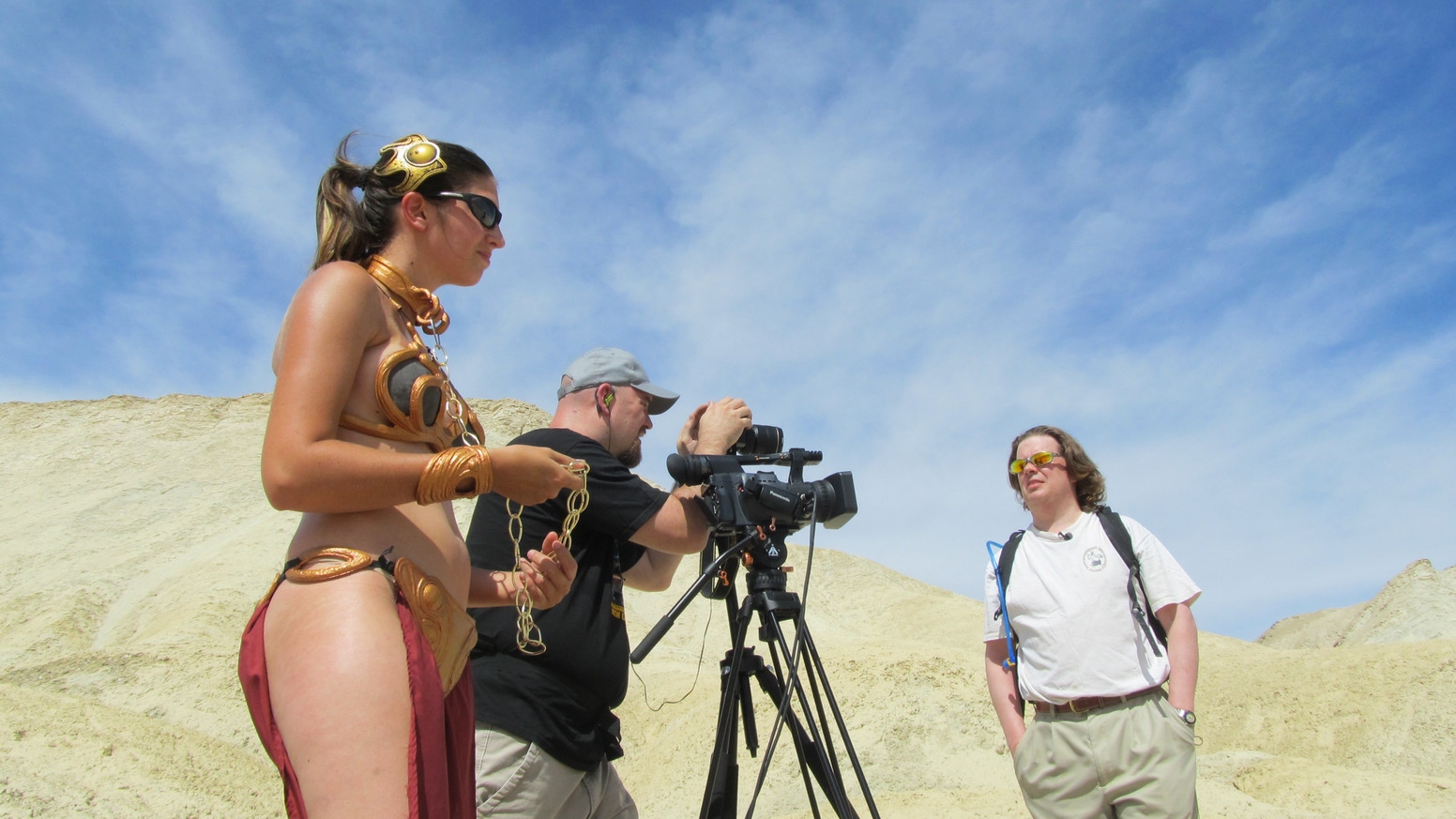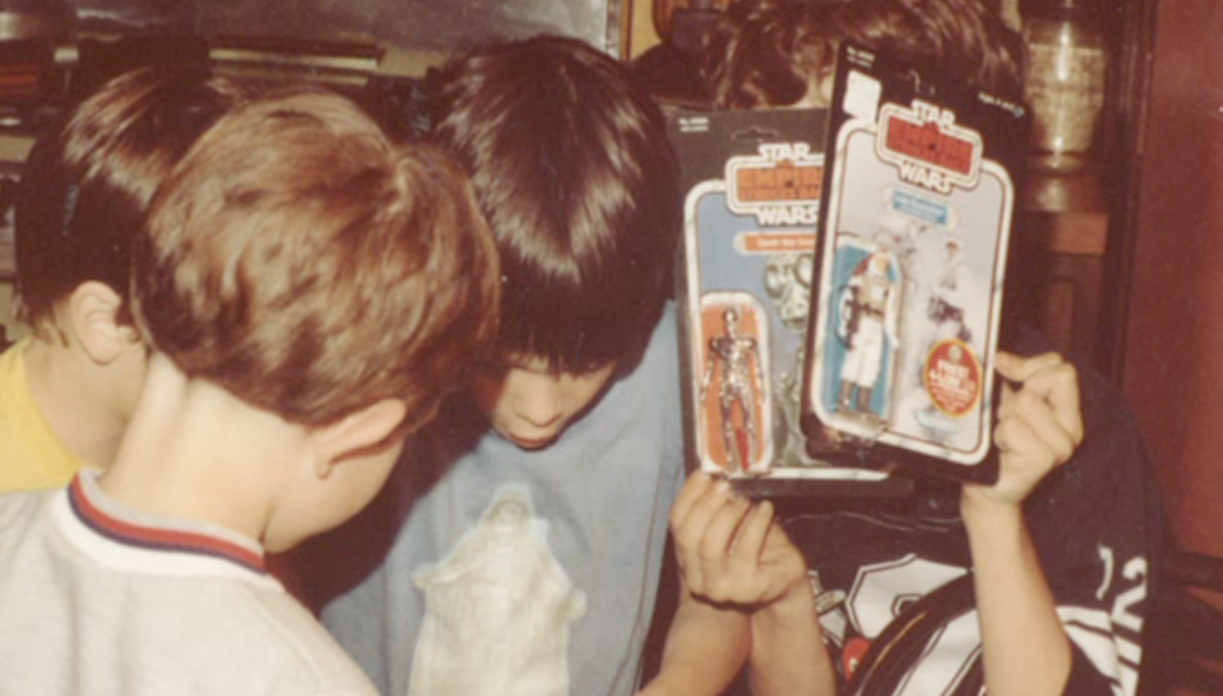Like the legion of “first-generation” Star Wars fans, this 125-minute experience changed my understanding of what “movie,” meant, supplanting the gaudy spectacle of my former favorite, a certain Dino De Laurentiis 1976 man-in-an-ape-suit remake that launched Jessica Lange’s career.
But Star Wars drew an immediate line in the sand, truly, in the lives of me and my pals, influencing our sense of play (lightsaber duels in the back yard replaced stealing home base), overtaking every birthday and holiday (we kept Kenner in business and the Sears Christmas Wishbook on press) and, I’m certain, sending Topps trading card stock to bullish heights.
Like Room 237, the outrageous new documentary about Stanley Kubrick’s The Shining—or rather, about fetishist theorists convinced that the 1980 landmark horror picture is a clearance house for everything from a Native American apologia to deeply coded sexual aggression—filmmaker Cris Macht’s similar movie-movie paen The Force Within Us, the penultimate tribute to Star Wars as a way of life, might initially appear the indulgence of a cinefile on a subcultural descent into fanboy mania.
But on closer inspection this insightful picture is really a document of the personal impact movies have on us; their power to reach inside us, transform us and give us something to believe in; and how as adults we willingly embrace pop culture touchstones as time machines back to a place where life was simpler, perhaps even better, and seemed to promise more than it may have ultimately delivered. Reductively, one might be tempted to deem this reverie simple nostalgia, but running through the documentary The Force Within Us is a cogent discussion of the power of art to restore optimism and unite families and communities.
“I can’t think of my life without Star Wars,” says Westmont, Illinois native Macht, whose previous 2007 picture The Force Among Us explored the franchise and fan-base of the Star Wars phenomenon, this time taking a deeper, more personal approach with his Kickstarter-funded The Force Within Us, a scrappy but at-times fascinating little movie. Macht, a Columbia College graduate with a career in audio, became a filmmaker by happenstance, a natural extension of his passion for his subject and desire to take that fixation to a higher level of discourse.
The main thrust of the picture—for both Macht (who appears extensively on camera as a sort of roving, Michael Moore-esqe driver), cinematographer and friend Ian Vacek and scores of others—is that Star Wars is a quasi-religious experience, and one firmly affixed to both past and present. Macht lost his father at tender young age and experienced a void until, as an adult, he coincidentally stumbled across a vintage VHS copy of The Empire Strikes Back—the viewing of which transported him to a fleeting, happy family time and place he wanted to be. “If I had not lost my father at such a young age, I would not have become the Star Wars fan I did,” he explains, seeing himself as a surrogate Luke Skywalker on a quest to make sense of his world and lineage. Woven throughout this picture are similar stories of fans’ personal relationships to the now-legendary saga.
 Over the course of this well-researched movie, Macht takes us to actual Star Wars filming locations, including both California’s Death Valley and Redwood Forest, as well as on the convention circuit and into the homes of devotees. What emerges is a collection of voices who offer testimony to the lasting power of the series. In addition to Macht we hear from families—generations of them—whom Star Wars has united (man caves here are veritable museum-like showrooms, annexed to display treasure troves of action figures and models), as well as journalists, actors, conventioneers, artists, authors, patient wives and actual technicians who worked on Return of the Jedi, on hand to offer anecdotal insights into everything from being Harrison Ford’s stand-in to the impact the Return of the Jedi shoot had on their small-town locations and career legacies.
Over the course of this well-researched movie, Macht takes us to actual Star Wars filming locations, including both California’s Death Valley and Redwood Forest, as well as on the convention circuit and into the homes of devotees. What emerges is a collection of voices who offer testimony to the lasting power of the series. In addition to Macht we hear from families—generations of them—whom Star Wars has united (man caves here are veritable museum-like showrooms, annexed to display treasure troves of action figures and models), as well as journalists, actors, conventioneers, artists, authors, patient wives and actual technicians who worked on Return of the Jedi, on hand to offer anecdotal insights into everything from being Harrison Ford’s stand-in to the impact the Return of the Jedi shoot had on their small-town locations and career legacies.
Anyone who has deeply loved a movie—any movie—since childhood will appreciate the sense memories at work here in this picture’s interviewees. You can’t help but like the engaging Macht, and as I recently told him during a lengthy chat about the picture, The Force Within Us is, at heart, a depiction of a man and his great love—that born in a galaxy far, far away that has informed every strand of his own DNA.

If The Force Within Us could have used a bit of pruning in its interviews—a familiarity sets in midway and the film loses a bit of direction when subjects start to sound somewhat similar in their sentiments—the picture’s heart (if not its editing) is in the right place.
The Force Within Us is about innocence lost, then regained through the transcendental power of the movies. Like Macht and company, I still own—and revere—my Star Wars memorabilia, as vital now as ever.
Recommended.
3 stars.






